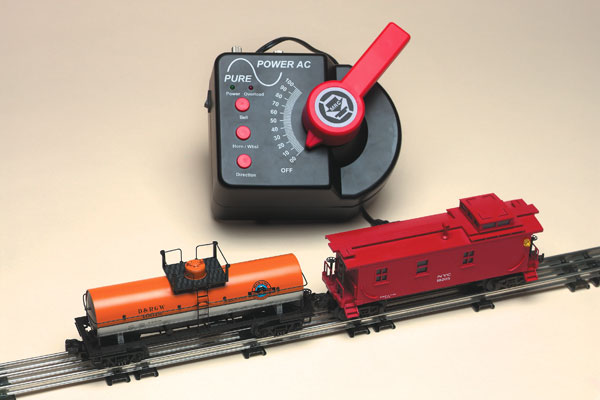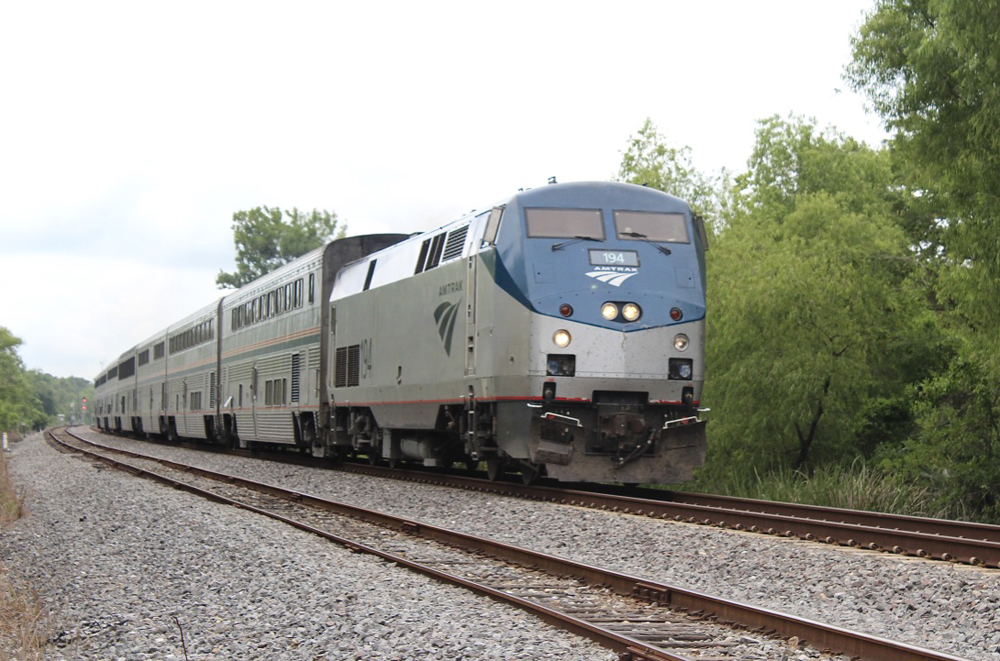“Sine wave,” you say? Well, like the ocean, electricity moves in waves. The normal fluctuation of AC electricity in a traditional toy-train transformer forms a pattern known scientifically as a sine wave.
All was calm until the advent of modern transformers with a modified wave pattern. Turns out that not all of the ever-changing toy-train sound systems liked modified waves, and the word “incompatibility” entered the vocabulary of toy train operators.
A few years back MRC introduced the DualPower O27 transformer that used a modified wave pattern. It won our seal of approval, but as time passed the list of new locomotives incompatible with the transformer grew.
The transformer would operate some train brands of any vintage without fail, others with some quirks (like spurious horn blasts), and still others not at all.
Today, the DualPower O27 still operates prewar, postwar, and basic modern locomotives well, but don’t try it with the latest TMCC/RailSounds and ProtoSound 2.0 locomotive circuitry without anticipating trouble.
MRC has atoned for this with the Pure Power AC transformer.
The firm advertises this transformer as using the image of a traditional sine wave and the tag line “This transformer runs them all.”
It does.
The Pure Power AC transformer is bigger than it looks in photos. The plastic case measures 61/2-inches by 73/4-inches and it is 41/2 inches tall. The unit weighs 8 pounds, 9 ounces.
The power on/off switch is on the side of the box. On top you’ll find a red 51/2-inch-long handle and buttons for direction, bell, and horn/whistle. There are also power and overload lights. This is a basic transformer that will provide one main line with up to 130 watts of power (17 volts as per the manual) and offers 14 volts for accessories.
Our product testing was pretty straightforward: We tried the transformer with a shopping list of prewar, postwar, and modern-era locomotives from a wide variety of manufacturers possessing a combination of sound and/or command systems and upgrades.
We tested all engines in conventional mode. Those models with a command system, either Lionel’s TMCC or MTH’s DCS, were checked with the PurePower running the appropriate command equipment.
All worked well, save one.
The only failure we experienced was with our troublesome early model MTH SD60 with an old version of the first ProtoSound system. This is an engine we’ve dubbed “Old Cranky,” as it won’t leave reset on cloudy days. In this case the problem was the engine, not the transformer.
Our Pure Power AC successfully ran a full variety of locomotives of differing manufactures, eras, and levels of electronic sophistication. It also served as a good power source for both the Lionel TrainMaster and MTH DCS command systems.
In short, the Pure Power AC transformer delivers on its inclusive promise, and because of that will probably find a home on a lot of pikes!














